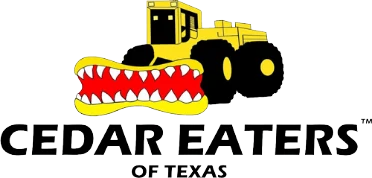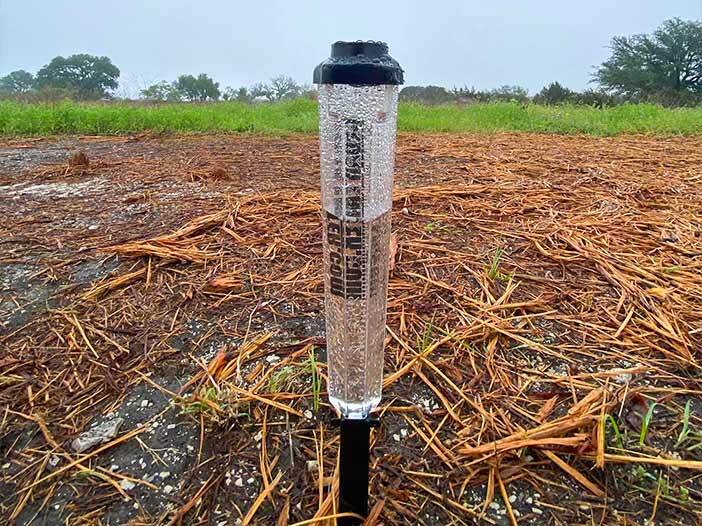Living in Central, South and West Texas, we are accustomed to dry arid weather patterns that come in cycles with brief wet seasons that seem to be getting further and further apart. Since our rainy seasons seem to be spreading out we need to capitalize on rainwater retention during our wet seasons.
Much of this landscape is covered with Ash Juniper “Cedar” and Prosopis glandulosa “Mesquite,” both of which seem to thrive in our semi-arid climate, and both species are also great at consuming water. While Cedar is great at catching water from the atmosphere, Mesquite is incredibly efficient in sucking it out of the ground. If you have ever cleared some of your land you would notice the difference. Cedar is a very fibrous tree with a shallow surface root while Mesquite is a dense hardwood with a deep root system that often extends deeper into the ground than the tree is tall.
Both species have thrived and expanded in our landscape due to a lack of natural control, such as wildfires and poor grazing practices. This is one of the main reasons Cedar Eaters focuses mainly on vegetation control of these two species.
As rainy seasons become less frequent, we should all look for ways to maximize rainfall retention on our land.
Clearing your land via forestry mulching or grubbing, depending on what kind of species you are dealing with, has been proven to increase water retention within your own land. Natural springs can return and run longer when not competing with excessive vegetation. With forestry mulching, the mulch creates a protective layer over the ground that helps retain moisture during extensive droughts but also slows water flow decreasing erosion during heavy rain events. The mulch also acts as an insulator, slowing evaporation, keeping soil temps cooler and allowing native grasses to thrive. If you are grubbing, the excavator disturbs the ground where each individual tree is present without disturbing the grasses around it. This process leaves a small disturbed depression in the ground where the tree once stood that can be smoothed with a secondary piece of equipment. These depressions also slow water flow during heavy rain events and trap more water on the property.
Cedar Eaters prioritizes these two methods as they are by far the least invasive way to clear your property, allowing for maximum retention of water on your land. With the population of Texas continuing to grow, we are stressing one of our state’s most vital natural resources: water. We have seen this recently with the drought that continues in the Texas Hill Country. It is for this reason we believe clearing your land using the two methods we promote is instrumental in maximizing rainfall retention on your land.

I recently performed an experiment as proof for this blog. I set out three rain gauges on a property we are working on near Meridian, Texas. I put one rain gauge out in the open, one under a drip line of a Mesquite, and one under a Cedar tree. The rain gauge that was placed in the open received a total of 4 inches of rain. The second one that was placed under the drip line of a Mesquite tree captured nearly 4.5 inches of rain. That’s a testament to the drip line of a tree doing its job to capture more water for the tree’s root system to feed off of. The third rain gauge was placed under a Cedar tree and captured nearly 2.5 inches in the rain gauge. One can only gather that the rest of the rainfall that fell on this Cedar within the same area was caught by the tree and held in its fibrous needles and limbs.







